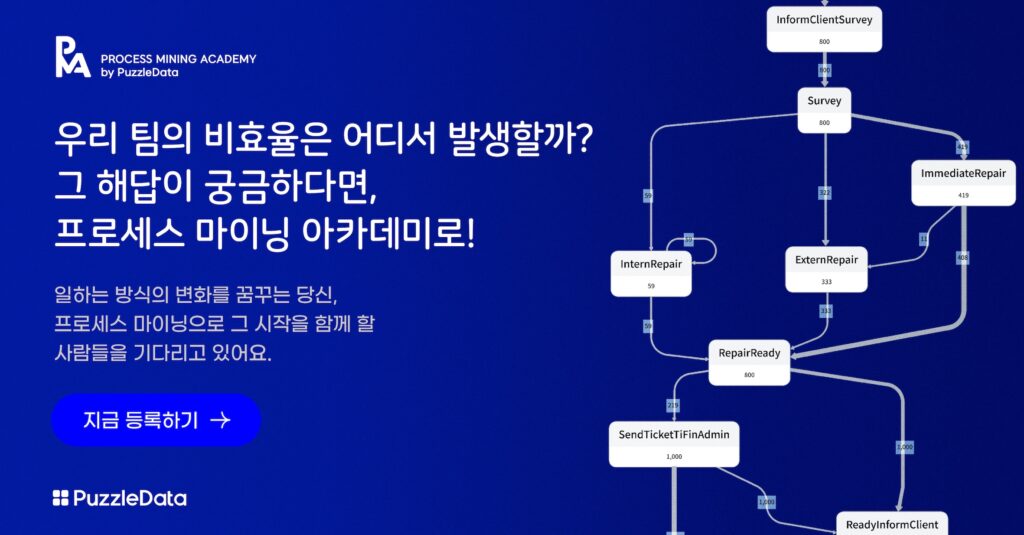Process Mining Application Case (1) – Events in a Call Center
Kwang Seob Kim| Jun 8 2022| 4 min read
Process mining is a crucial tool for enhancing system revamping and integration in call centers, as it efficiently identifies system issues, worker challenges, and opportunities for process optimization, ultimately leading to the development of more efficient and user-friendly systems.
Process mining is utilized in various fields such as finance, manufacturing, logistics, and more. It is primarily used to identify areas for process improvement, automation, or to extract factors that can enhance customer usability and convenience through the analysis of customer behavior. In recent cases, process mining has been applied to the overhaul and integration of systems in call centers.
But why is process mining necessary for system revamping and integration? In this post, we will introduce the importance of process mining based on a real case and share brief analysis results using sample data.
To revamp systems and integrate them effectively, a strategic planning process is required as a preliminary step. Process mining is used to deepen this strategy, leading to the development of more efficient and reliable systems. First, let’s explore the process of formulating UI/UX strategies. Based on a brief experience, the process of formulating UI/UX strategies typically involves the steps outlined in [Figure 1].

[Figure 1] Establishing UI/UX Strategy Procedure
In [Figure 1], the process of identifying issues typically involves qualitative methods based on interviews and quantitative methods based on objective data. However, qualitative methods, while helpful in understanding the tasks and identifying issues, may not fully represent the grievances or opinions of all individuals. Additionally, using qualitative methods to substantiate identified issues often requires numerous interviews and significant time.
Process mining can efficiently complement and integrate these approaches. By collecting logs containing the actions of workers and applying process mining, it becomes possible to quickly identify system issues and tasks that workers find challenging. Furthermore, process mining can provide evidence-based support for the problems identified through qualitative methods. In this case, as shown in [Figure 2], a combination of qualitative and quantitative methods with process mining was used to enhance the formulation of UI/UX strategies.

[Figure 2] Process Mining Utilization Procedure
To deepen the strategy formulation, process mining provided analysis results in terms of efficiency and functionality, as shown below. In this way, process mining can be used to enhance and develop UI/UX strategy formulation by offering optimized processes and design elements, ultimately leading to a more efficient and complete To-Be system.
1. Efficiency Analysis
– As shown in [Figure 3], we identified areas of repetitive tasks and opportunities for process simplification, allowing us to establish a proactive response system.

[Figure 3] Efficiency Analysis Result
2. Functionality Analysis
– Similar to [Figure 4], we uncovered frequently used functions based on frequency and important tasks among related systems, leading to the establishment of a data-driven integrated center work design support system.

[Figure 4] Functionality Analysis Result
In this post, we introduced how process mining was utilized for a specific purpose based on the results achieved in a call center. The results presented here are based on sample data created from real cases. We hope to continue sharing various cases related to process mining, and we appreciate your ongoing interest in this field.

